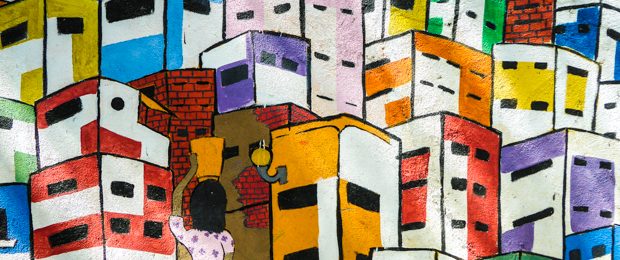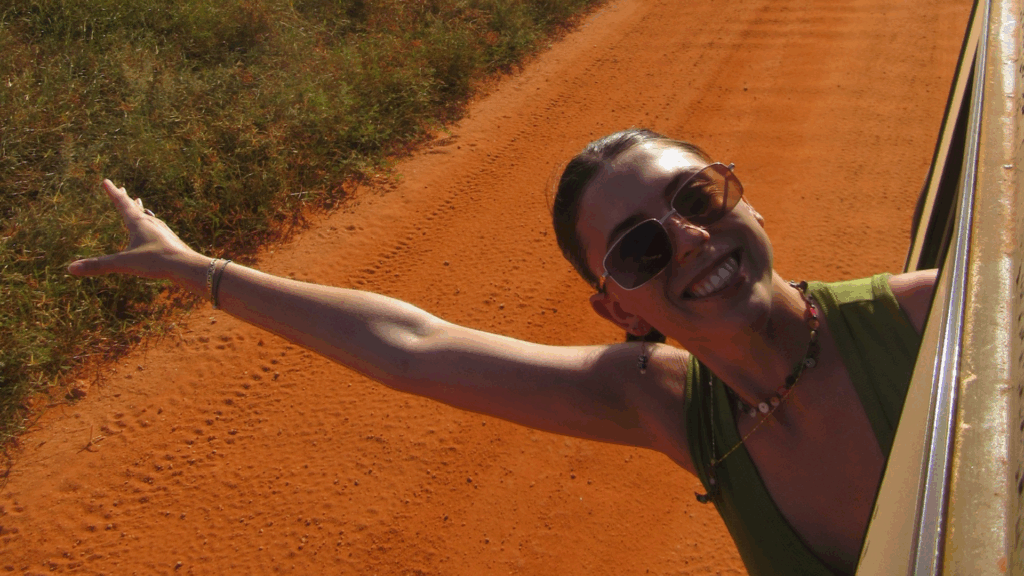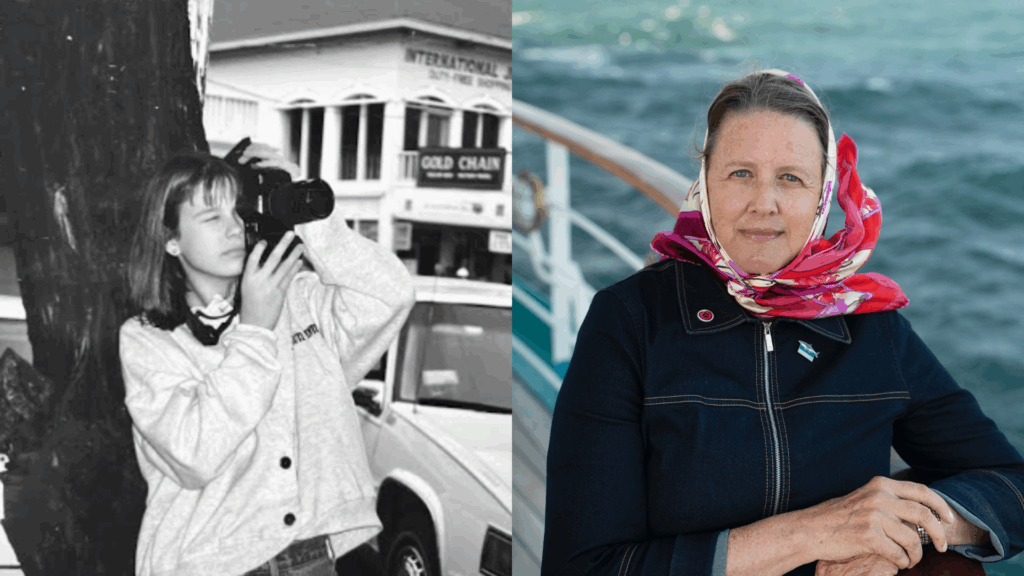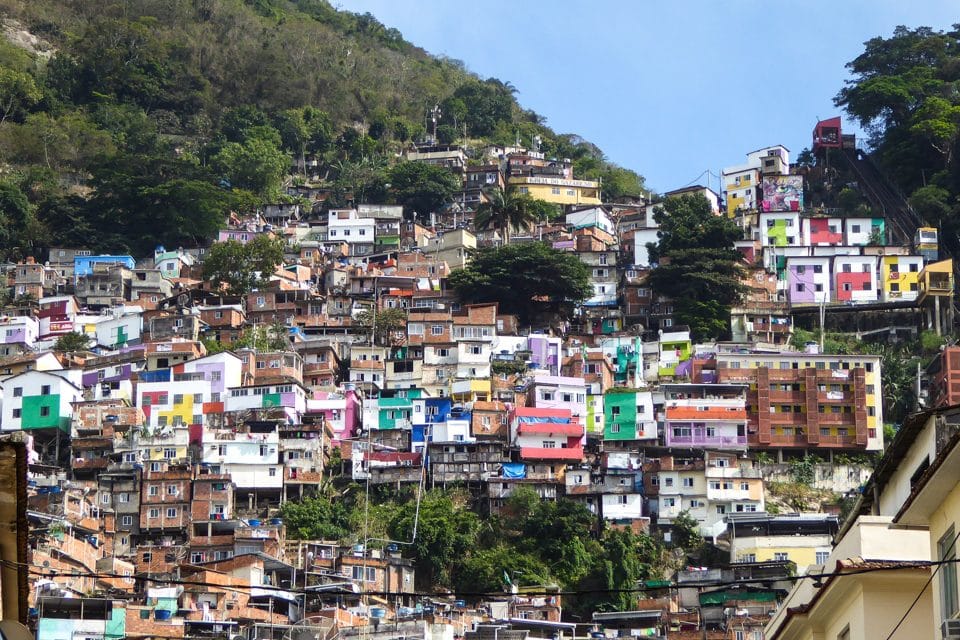
Favelas are impoverished and close-knit communities that are often referred to as the slums of Brazil. They are a big part of the country’s culture and the city of Rio de Janeiro specifically. For the Anthropology and Underdevelopment class, their visit to the Santa Marta posed an in-depth look at the community and the effect of tourism.
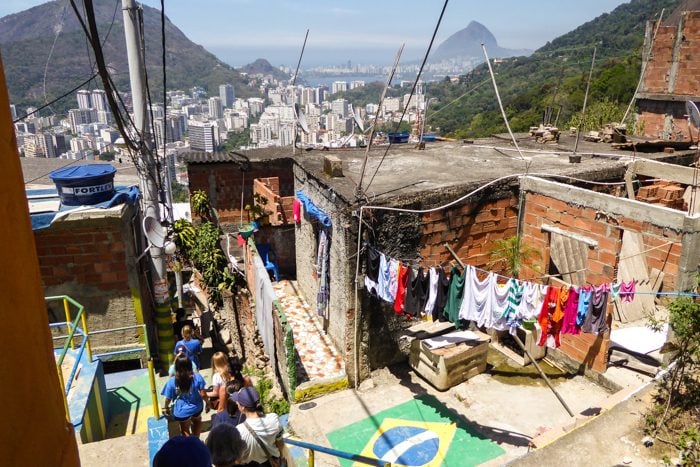
With over 200 favelas around the city, Santa Marta was the first to undergo the pacification process six years ago. Built into the side of a mountain, it is one of the steepest favelas in Rio de Janeiro. Members of the community are challenged daily by the task of climbing to their homes with groceries, hardware, and renovation supplies in hand. Local guides and residents of Santa Marta walked students through the favela, sharing details of their everyday life and childhood.
As the group observed residents, they noticed that the blend of cultures in Santa Marta was alive and well. With a variety of styles, foods, and décor peppering their explorations in the center of the favela, the community was far from a product of segregation, and its diversity reflected the population of the entire country.
“There are different kinds of people here. I am white; my sister and father are black… It’s all mixed. We are all united,” said local guide, Jonatas Nogueira.
Professor Tracy Ehlers hoped her class’s preparation would help them look past their surface observations and view the favela from an analytical perspective. Reading Child of the Dark: The Diary of Carolina Maria de Jesus, they studied the history of favelas through the eyes of someone living inside their walls. Interested in the government’s involvement in the community, her class was able to visit the police headquarters and learn about their initiatives and participation in the pacification process.
“We had a critical lens that made this experience a learning one for us and not just a tourist experience,” said Professor Ehlers.
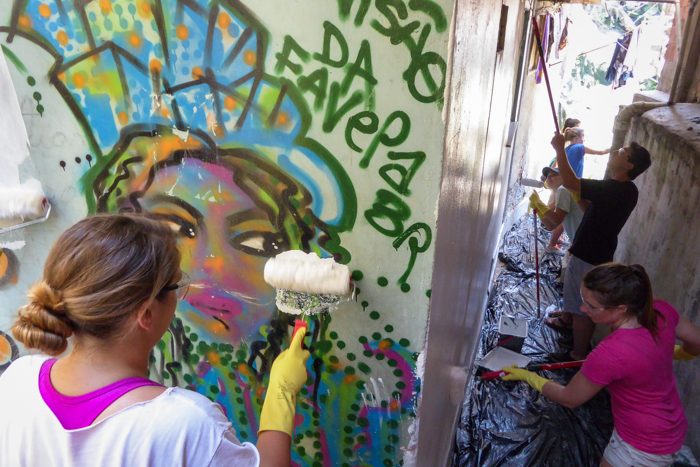
Seeking out opportunities to interact with locals, students assisted residents in an ongoing project to repaint Santa Marta. Later in the day, both students and locals gathered in their community center for an open dialogue. Unlike typical panel discussions, students asked members of the community a question and they in turn responded with a question. The reciprocal nature of this discussion made the experience a valuable one for both the residents and students. Semester at Sea was also able to donate soccer balls from One World Football and toothbrushes from Global Grins as a small thank you to the community for their openness and hospitality.
Leaving with a different perspective on a society that is often misunderstood, students valued the time they spent getting to know this community and the conversations they had with locals. University of Colorado Boulder student Kimberly Langona concluded, “Favela doesn’t have to mean crime and drugs‚Ķ It can mean a tight sense of community.”
Photos by: Joshua Gates Weisberg
